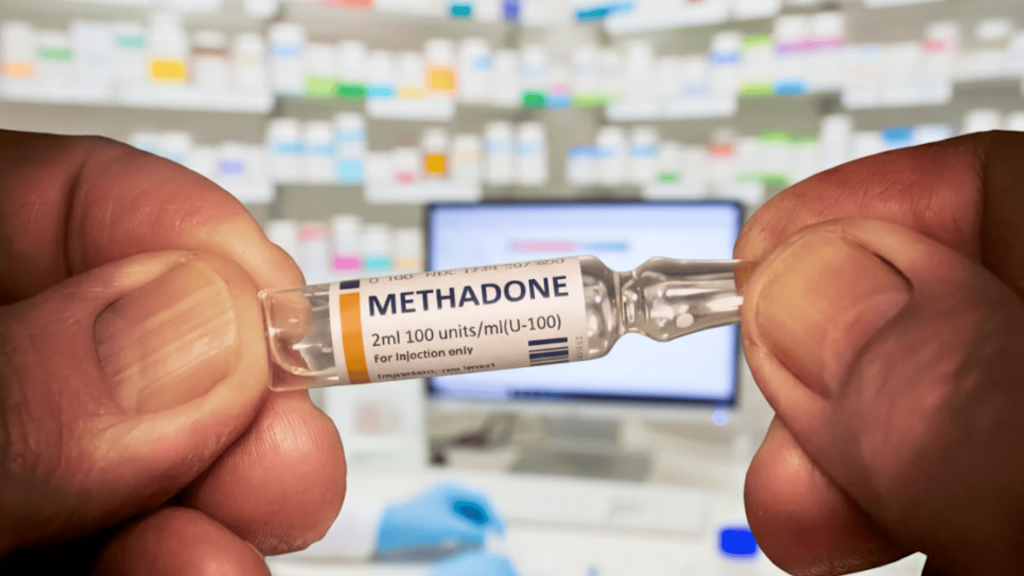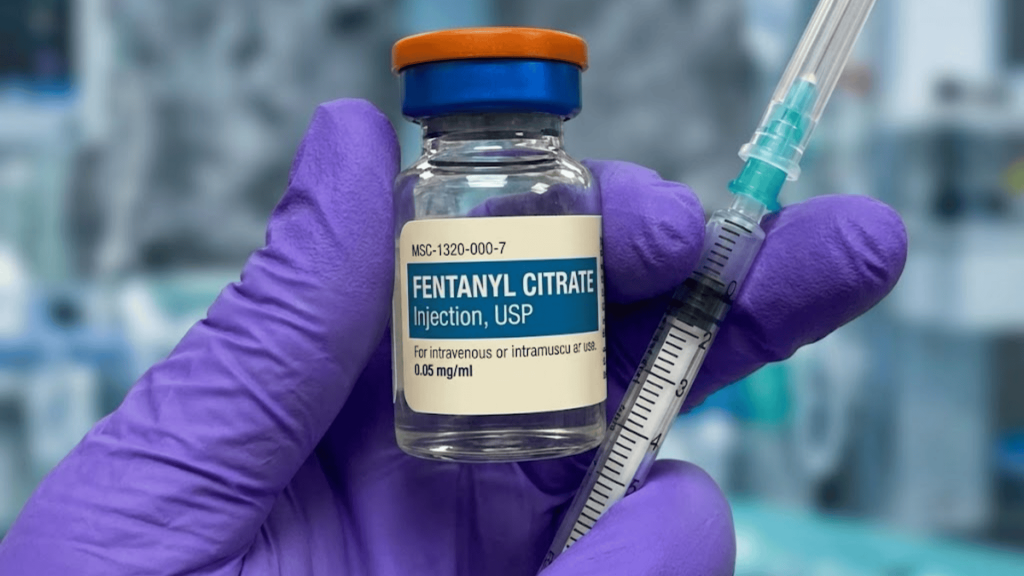I know how confusing it can feel when you hear different answers about what is the average dose of methadone. You might be starting treatment or just trying to understand it better for someone you care about.
In this post, I’ll walk you through what methadone is, how it works, and why the dose can change from person to person.
You’ll learn about starting doses, typical maintenance ranges, pain dosing, safety checks, and tapering tips.
My goal is to give you clear information so you can have informed talks with your provider and feel more confident about methadone treatment.
This information is for educational purposes only and should not replace medical advice from a qualified healthcare professional.
What is Methadone?
Methadone is a synthetic opioid agonist. It works on the same receptors as heroin or prescription painkillers, but without the rapid “high” associated with those drugs. This makes it effective for reducing withdrawal symptoms and cravings in people with opioid dependence.
Because methadone has a long half-life, often more than a day, it can be taken once daily in most treatment programs.
It’s also used in low, carefully titrated doses for chronic pain when other opioids are unsuitable. Understanding what methadone is helps explain why its dosing requires such careful management.
Goals of Methadone Treatment
The main goal of methadone treatment is to help you feel stable while reducing cravings and withdrawal.
When taken correctly, it replaces short-acting opioids like heroin or oxycodone, keeping your brain’s opioid receptors satisfied without the cycle of highs and crashes.
Over time, methadone allows your body to adjust to a steady level of medication, so you can focus on recovery, daily routines, and counseling.
It doesn’t just block withdrawal, it supports a safer, more balanced life while you work toward long-term goals.
What to Expect in the First 30 Days
The first month of methadone treatment focuses on finding your stable dose. During this time, your provider adjusts your medication gradually while monitoring for cravings, withdrawal, and side effects.
You’ll likely visit the clinic frequently for observed dosing and check-ins. Some people feel mild drowsiness, sweating, or constipation early on; these usually improve as your body adjusts.
Communication is key; share how you feel so your provider can fine-tune your dose safely. By the end of the first 30 days, most people begin to feel steadier and more comfortable.
What is the Average Dose of Methadone
The “average dose of methadone” depends on why it’s being prescribed:
- For opioid use disorder (OUD): Most people stabilize on a maintenance dose between 60 mg and 120 mg per day taken once daily. Some need less (around 40 mg) and others need more than 120 mg under close medical supervision.
- For chronic pain management: Methadone is started much lower, often 2.5 mg to 10 mg every 8–12 hours, with slow increases as needed.
Because methadone accumulates in the body and interacts with other medications, dosing must be individualized and carefully monitored.
There isn’t one “right” dose for everyone; the goal is to control withdrawal or pain without causing sedation or breathing problems.
Always follow a qualified healthcare professional’s guidance rather than adjusting your dose on your own.
Methadone vs. Other Opioids
Methadone works differently from other opioids. Knowing these differences helps explain why doses vary so much.
| Feature | Methadone | Morphine / Oxycodone | Suboxone |
|---|---|---|---|
| Type | Full agonist | Full agonist | Partial agonist + blocker |
| Half-Life | Long (15–55 hrs) | Short (2–6 hrs) | Moderate (24–42 hrs) |
| Main Use | OUD, chronic pain | Pain relief | OUD maintenance |
| Dosing | 1x daily (OUD) | Every 4–6 hrs | 1x daily |
| “High” Risk | Low if stable | Higher | Very low |
| Withdrawal Relief | Strong, lasting | Short-term | Steady |
| Overdose Risk | Higher if unmonitored | Moderate–high | Low |
| Monitoring | ECG, slow titration | Routine | Usually stable |
Methadone lasts longer and acts fully on opioid receptors, so it works well for maintenance when monitored closely.
Why Dose Variation is the Rule in Methadone Pharmacokinetics
Methadone’s half-life varies widely between people, from about 15 to 55 hours. It takes several days to reach steady blood levels after a dose change. This slow build-up increases the risk of overdose if the dose is raised too quickly.
Individual differences also matter. Some people metabolize methadone faster or slower depending on liver function, genetics, or other medications.
Certain antibiotics, antifungals, or seizure drugs can alter methadone levels significantly. These factors make “average” doses only a starting point rather than a fixed rule.
How Methadone Dosing Differs for Pain

When used for chronic pain, methadone dosing is very different. It’s typically started at 2.5–10 mg every 8–12 hours, depending on your previous opioid use.
Clinicians increase the dose slowly, using equianalgesic tables to convert from other opioids, but always conservatively because of methadone’s delayed accumulation.
Pain patients are also monitored for QT prolongation (a heart rhythm change), interactions with other medications, and signs of sedation. This is why methadone for pain is often prescribed by specialists.
Key points for methadone in pain management:
- Start low (2.5–10 mg every 8–12 hours) and titrate slowly.
- Use equianalgesic tables carefully when converting from other opioids.
- Monitor heart rhythm (QT interval), drug interactions, and sedation signs.
- Pain management with methadone is usually handled by experienced specialists.
Adjustment Monitoring and Safety to Avoid Overdose and Adverse Events
Methadone’s long half-life means any change should be small and spaced out.
Providers look for early warning signs like unusual sleepiness, slow breathing, or dizziness, which indicate the dose may be too high.
| Safety Step | Why It Matters |
|---|---|
| ECG checks before and during treatment | Detects QT interval changes that can lead to arrhythmias |
| Bloodwork for electrolytes and liver function | Identifies risks that could worsen side effects or toxicity |
| Drug interaction reviews | Prevents dangerous increases or decreases in methadone levels |
| Clear instructions for missed doses | Reduces the risk of overdose or withdrawal from dosing errors |
With these precautions in place, you can move on to understanding how methadone doses are tapered or adjusted over time to maintain both safety and effectiveness.
How to Safely Start and Adjust Methadone
Getting methadone dosing right at the start is essential. The first few weeks determine how well the treatment works and how safe it is.
Programs follow structured steps to balance withdrawal control with overdose prevention. Here’s how the process usually works:
- Start with a cautious initial dose: Most programs begin with 10–30 mg once daily to let methadone build up safely in the body.
- Use lower doses for certain patients: If you have low opioid tolerance or take sedatives such as benzodiazepines, the starting dose may be reduced to 10–15 mg to lower the risk of sedation or breathing problems.
- Increase doses gradually: After the first day, dose increases are typically 5–10 mg at a time every 3–5 days, allowing clinicians to assess your response.
- Limit total weekly increases: Many clinics cap total increases at 20–30 mg per week to prevent dangerous accumulation.
- Monitor closely during induction: Providers check for withdrawal symptoms, cravings, sedation, and breathing changes to ensure your dose stays safe and effective.
Taken together, these practices create a safer path toward stabilization. They help you reach an effective dose without unnecessary risks and make later maintenance or tapering phases more manageable.
Safe Tapering and Discontinuation of Methadone

If you and your provider decide to taper methadone, it must be done gradually. Common approaches reduce the dose by 2.5–5 mg per week or month, but the schedule is highly individualized.
Abruptly stopping methadone can trigger withdrawal and increase the risk of relapse.
Key Steps for Safer Tapering:
- Work with your provider to design a gradual reduction plan.
- Reduce in small increments (2.5–5 mg) at intervals your provider recommends.
- Watch for withdrawal symptoms and report them early.
- Use supportive counseling or therapy during the taper.
- Ask about adjunct medications that may ease withdrawal discomfort.
Final Thoughts
I hope this post helped you understand what is the average dose of methadone and why it can look different for each person.
We walked through starting doses, maintenance ranges, pain dosing, safety checks, and tapering options so you can have clearer conversations with your provider.
Reading this doesn’t replace medical care, but it gives you solid ground to ask better questions and make informed choices about your treatment.
If you’d like more practical tips on related topics, feel free to browse my other posts for ideas and guidance at your own pace.









